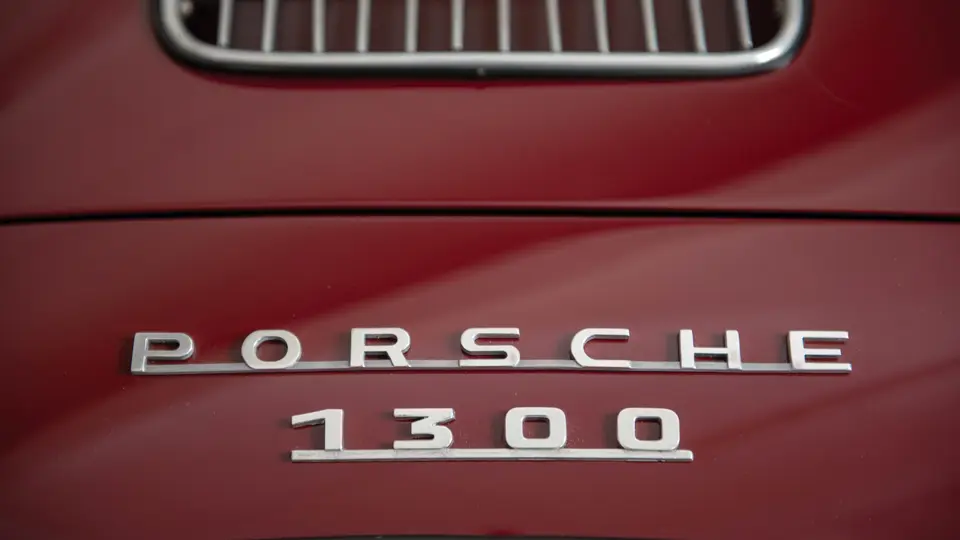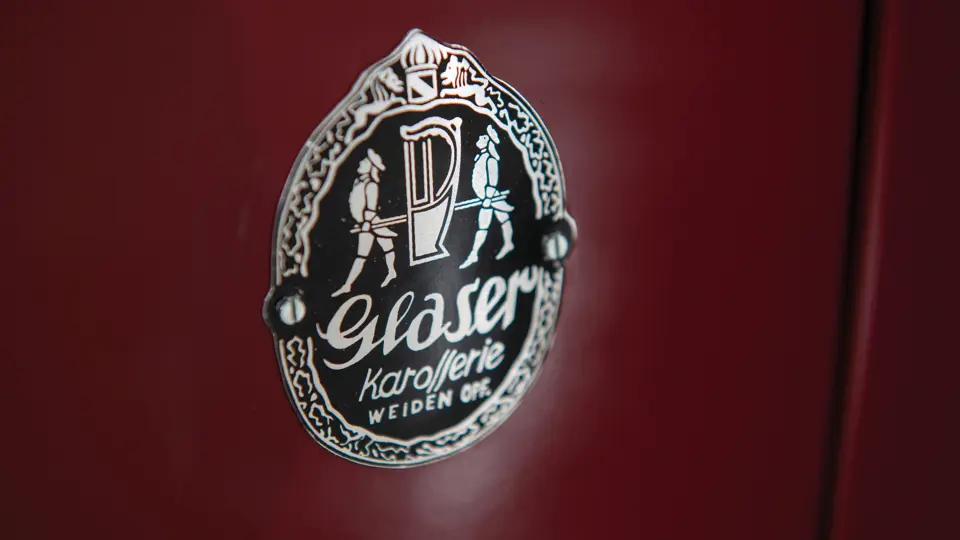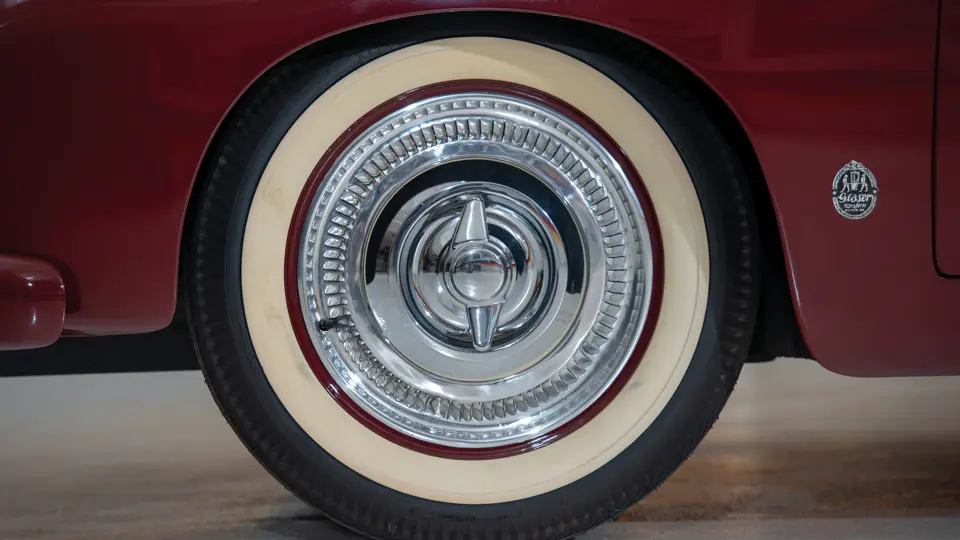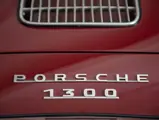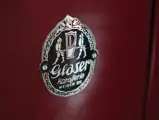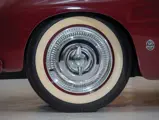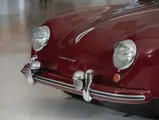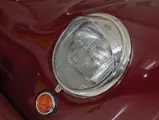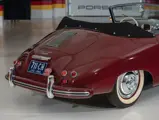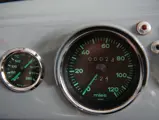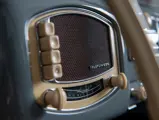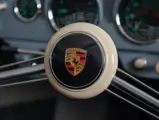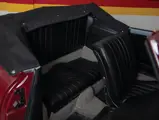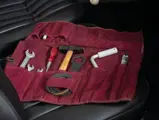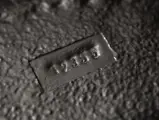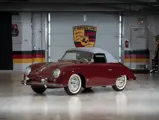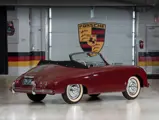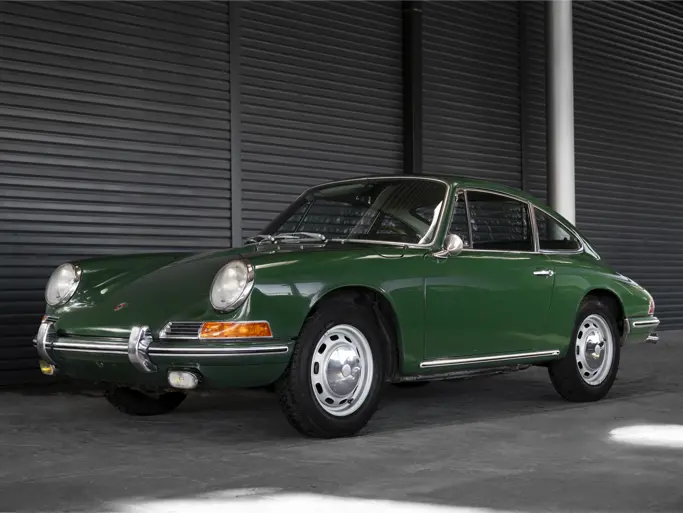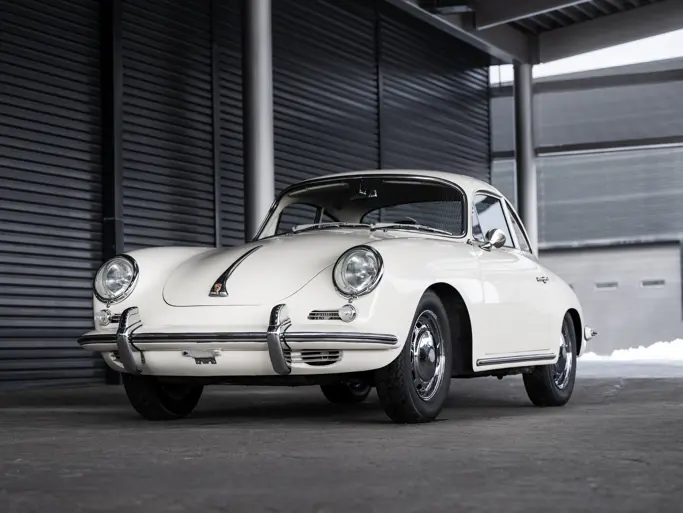
1952 Porsche 356 Cabriolet by Gläser
{{lr.item.text}}
$299,250 USD | Sold
{{bidding.lot.reserveStatusFormatted}}
- An extremely rare and desirable Gläser-bodied pre-A cabriolet
- Concours-quality restoration; well-documented history
- Presented in highly attractive color combination
- Kardex and Porsche Certificate of Authenticity included
After its class wins at Le Mans, Porsche was gaining notice. In 1951, Porsche’s primary bodywork supplier, Karosserie Reutter of Stuttgart, was swamped with work. Porsche needed another supplier to help it meet demand and turned to Gläser-Karosserie GmbH in Weiden. This old-line firm, founded in 1864 as a carriage builder to the royal houses of Europe, had a reputation for very high-quality workmanship. Originally based in Dresden, it produced luxurious convertible bodies for Mercedes-Benz, Horch, and Maybach.
Offered here from the Taj Ma Garaj is chassis number 12355, a 1952 pre-A series II cabriolet with coachwork by Gläser. It is one of just a small handful to ever reach the United States. “Model Year 52” Porsches differed from their predecessors in having a single-piece “bent” windshield as opposed to a “split,” two-piece windshield. What sparse data can be found indicates that Gläser produced a relatively small number of cabriolet bodies for the 356 chassis. In a letter to one of this car’s later owners, dated 28 October 1969, Porsche itself placed the total at 80. The company declared that no further information was available on these cars, explaining that they had been built 17 years earlier and nobody at the time could have imagined that they would be of interest so many years later.
A handwritten production ledger from Gläser dated 24 September 1952 lists this car as number 355 in its construction sequence. Ongoing research by subsequent owners indicates that 12355 may have been the fourth car produced of this small series. It was a late-production example with a fully synchronized gearbox, built just a few months before company owner Erich Heuer closed the business, unable to compete successfully with post-war mass-market competitors.
Both the factory Kardex and Certificate of Authenticity confirm that this cabriolet was completed 25 October 1952. It was painted in unusual Strawberry Red (Reutter/Gläser 524), certainly an eye-catching color for that dour period. The upholstery material and color were not recorded, nor was the transmission case number, and no further options were noted. It was delivered to Porsche agency Schmidt & Koch in Bremen, which sold it to its first owner, a local lady named Maria Nübel.
We don’t know how long Frau Nübel retained the car, but eventually it would make its way to the United States. A detailed handwritten chronicle prepared by one owner in early 1986 lists the car’s subsequent and lengthy provenance. It spent most of its American life between the early 1960s through to the early 1990s in Kansas and Oklahoma, with its several custodians making extensive efforts to learn more about this rare model. They corresponded with the factory; with Eric Heuer, whose company took over Gläser; with one another, and with other owners of early Porsches to learn how many of these cabriolets were constructed and how to unearth parts that were no longer available from the company.
The first serious effort to restore 12355 appears to have begun around 1976 with Tulsa attorney and Porsche enthusiast Jack Winn, who, after buying the car through a print ad, took the car home. He noted that many components were missing, but the seller later delivered several boxes of parts to Winn’s home. Winn took the car to Jerry Johnson’s Body Shop in Tulsa, where metalwork and paint were completed. The engine was removed for a rebuild, but unfortunately the original magnesium case was damaged in a chemical bath and was replaced by a slightly later case whose halves are stamped 5/26/1955 and 5/28/1955.
Mr. Winn spent the next decade searching for restoration parts, trim pieces, and factory data. Porsche expressed regret at not being able to help, but noted that the cabriolets built by Gläser were very similar to those from Reutter, although the convertible tops differed in some details. Winn queried another cabriolet owner about the shape and framing of the rear window. Then, in May 1986, Mr. Winn offered the Porsche for sale through the Tulsa Bargain Post: “1952 Porsche Cabriolet project car, completed bodywork, ready for paint. Over $2,500 in new parts and trim. $15,000–$25,000 value when completed. $8500.” The car was sold the following day.
By 1996, the Porsche had been sold to Mr. Ely Rocha in Tulsa, and in 2007 Rocha offered it in turn to long-time Porsche collector John Dixon at Taj Ma Garaj in Dayton, Ohio. Dixon bought the car and immediately sent it to Gary Kempton at GK Restorations in Tallahassee, Florida, with instructions to bring the car back to as-new specification. From 2007 to 2011, Kempton’s shop carried out a meticulous, award-winning restoration. A careful inspection reveals that the engine case number has been re-stamped, and several body panels carry the number 55, four digits away from the chassis number; however, this may be due to Gläser using its own production number rather than Porsche’s chassis number, as theorized with other examples.
It is generally acknowledged that hand-built convertibles such as this often vary in detail, and as this example provided no clues as to its original configuration beyond its correct paint color, individual owners are thus free to accessorize their cars to their personal tastes. This car is amazingly well detailed, with chrome eyelash headlight covers, driver’s-side rear-view mirror, European taillights, chrome cabriolet top bows, polished bumper guards, aluminum “hollow” hood handle, Turbo beauty rings with chrome center hubs and chrome knock-offs, wide whitewall tires, and correct Gläser coachbuilder tag. A pair of chromed Bosch electric horns have been fitted to the front bumper. Under the hood, the carburetors are topped by early Knecht air filters, and there are also correct braided wiring and windshield washers with glass jar. The lovely details extend to the interior with a period-correct early Telefunken radio, pull-out dash lamp, a dome light on the bottom of the cabriolet headliner, and a braided leather grab-handle on the passenger side. Mr. Dixon participated with this car in several concours tours and events, including display at both the Glenmoor Gathering and Ault Park Concours d’Elegance in Ohio.
Supplied with an extensive folio of correspondence, restoration invoices, and other documents chronicling its long life, this wonderful pre-A Gläser cabriolet is a rare gem, believed to be one of perhaps just two or three surviving in the United States. For the serious Porsche collector seeking a car that almost nobody else will ever own, this is an opportunity not to be passed by.

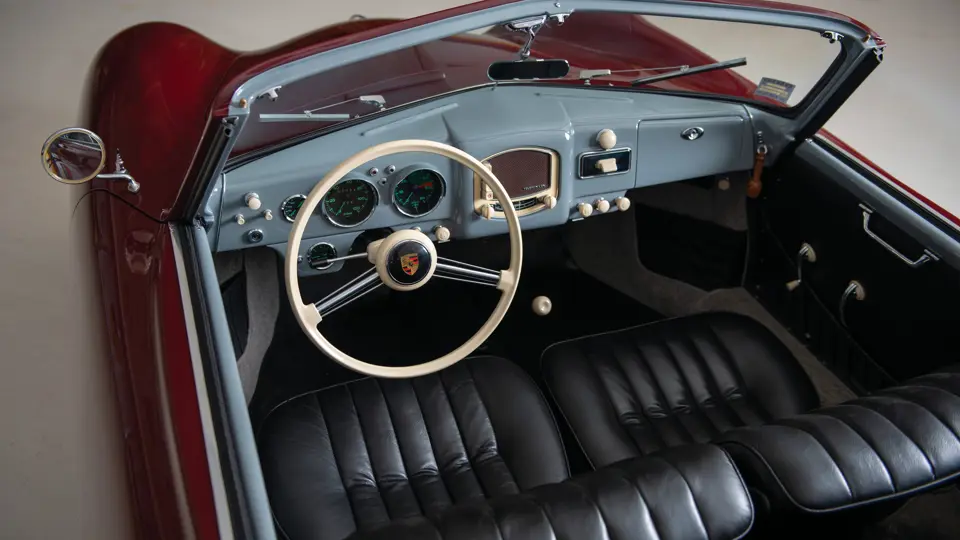


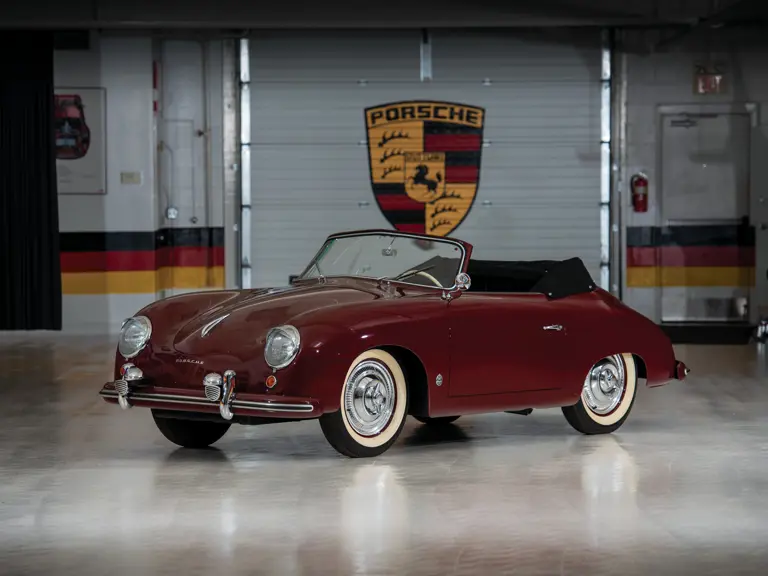

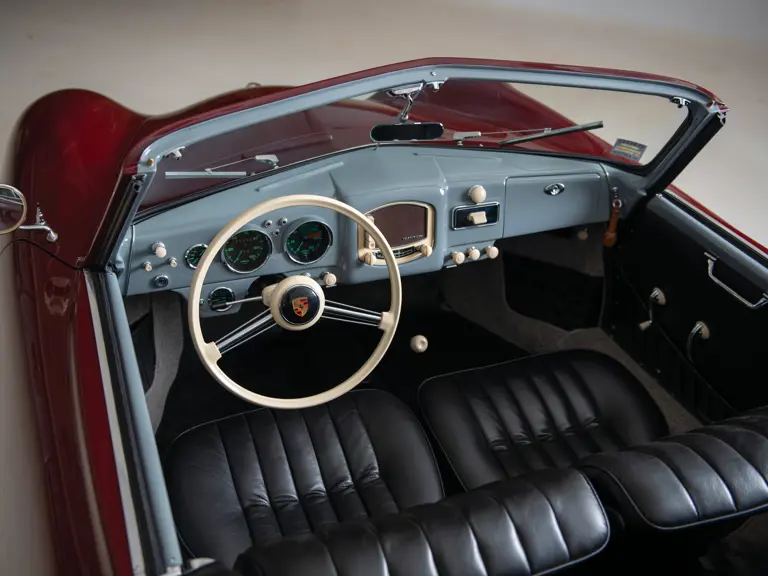
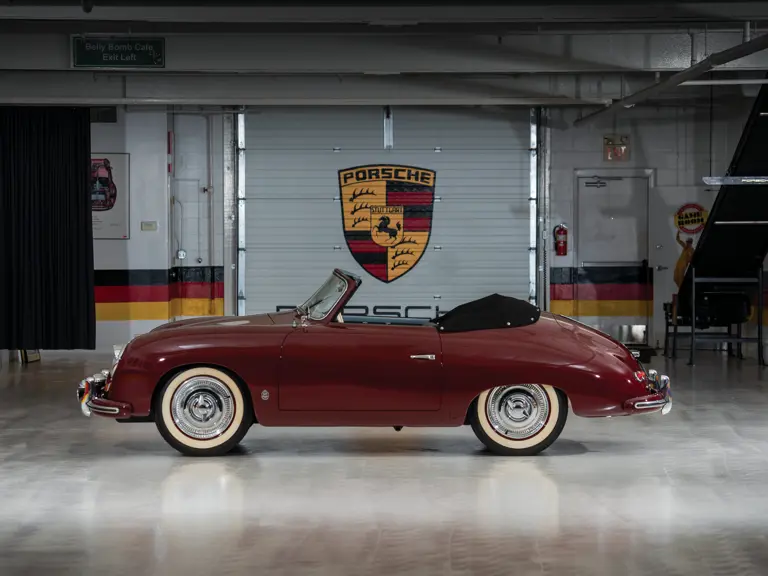

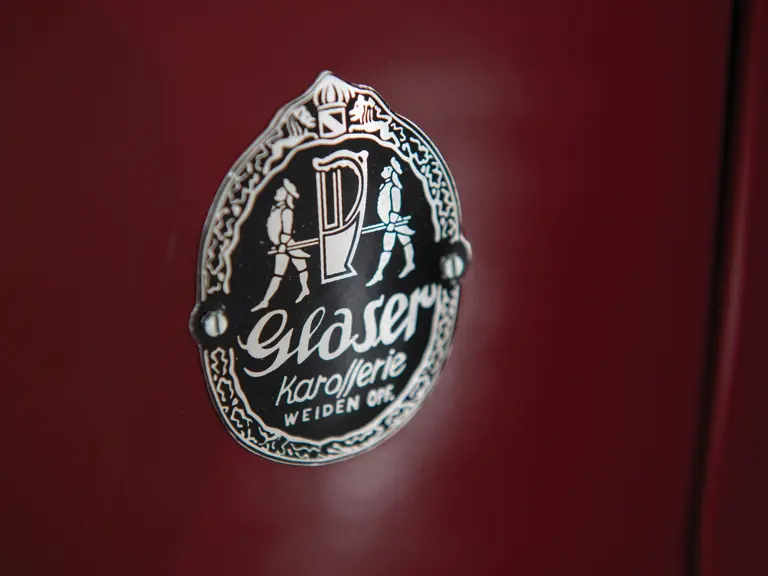
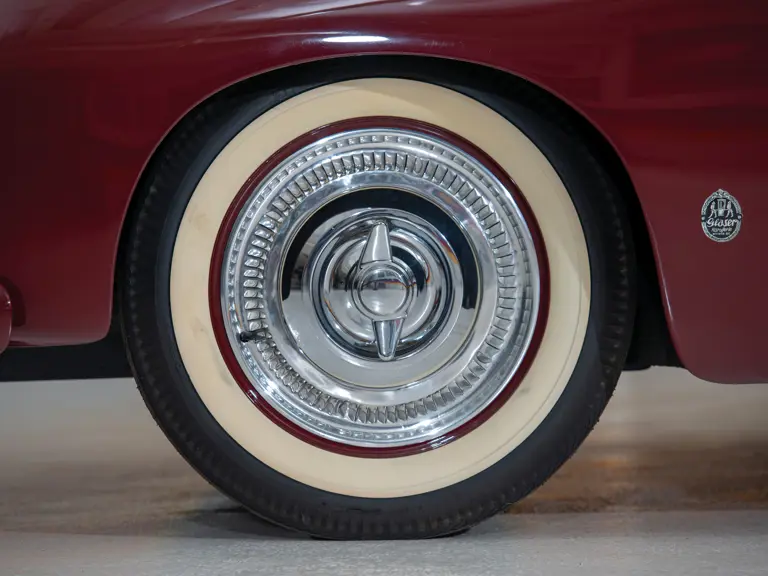
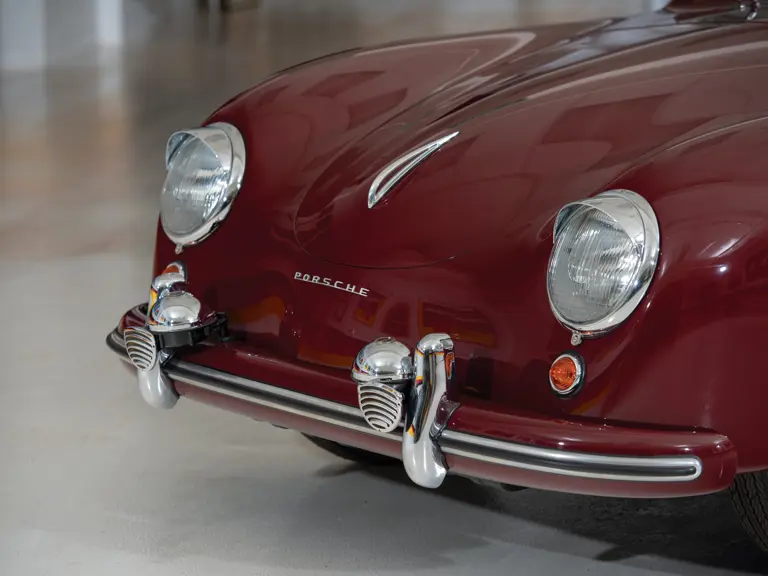
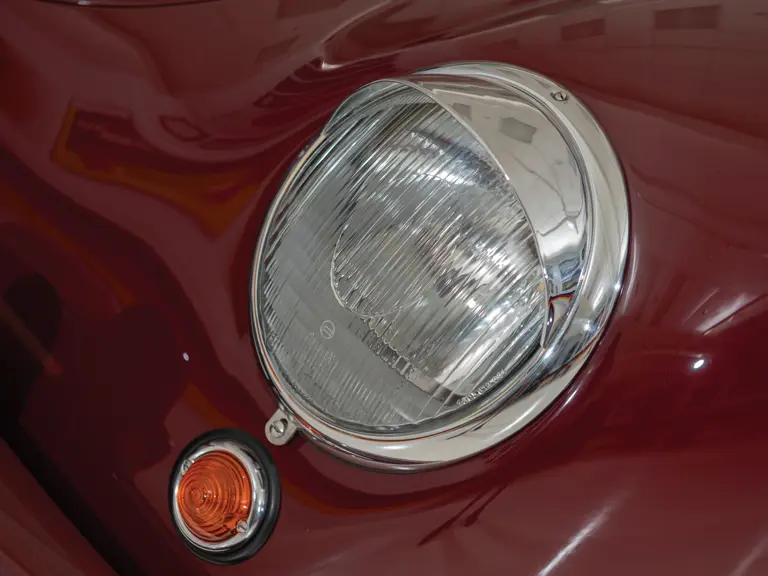

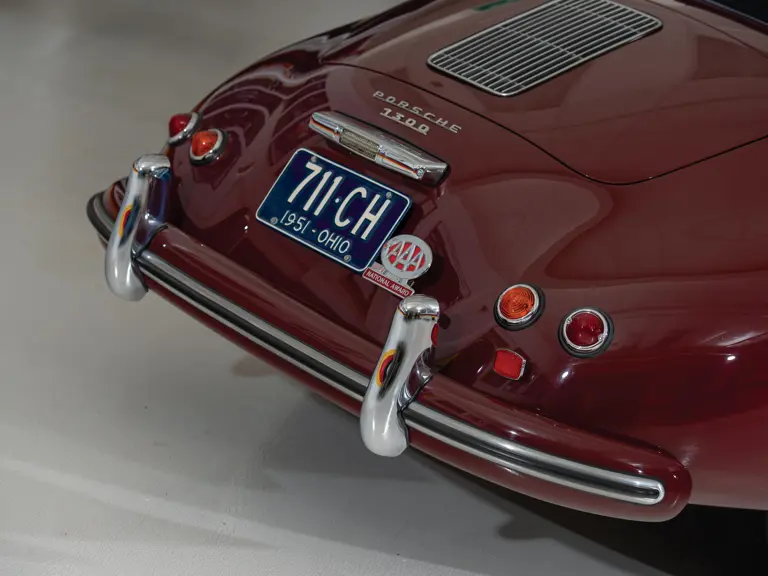

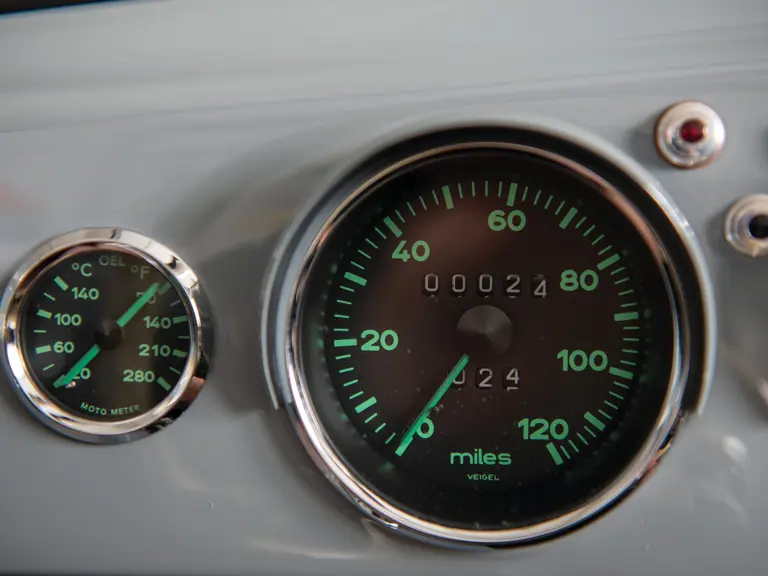
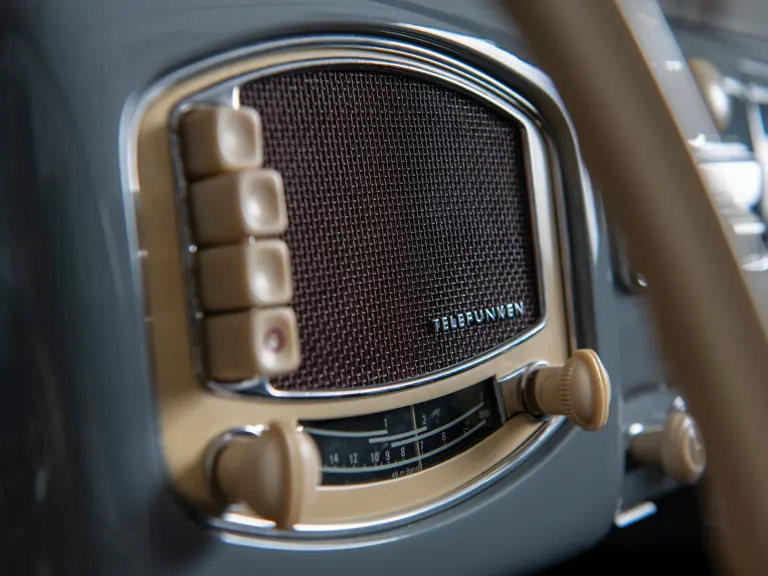
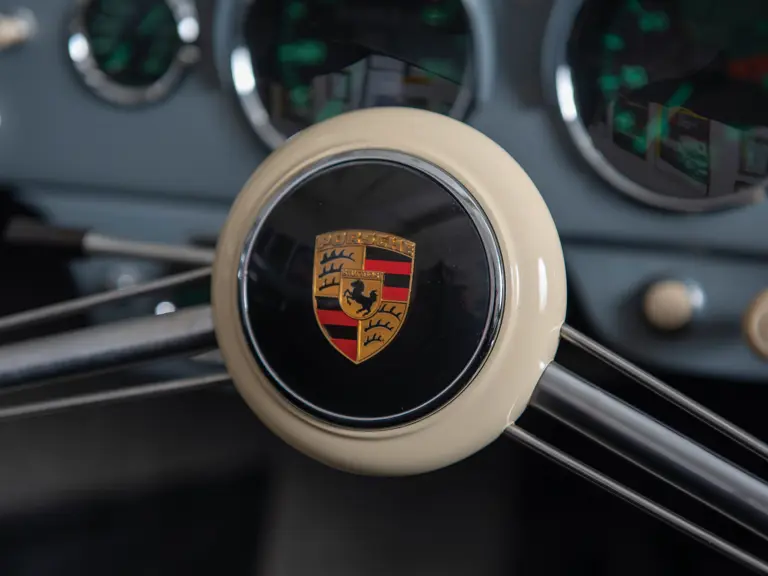
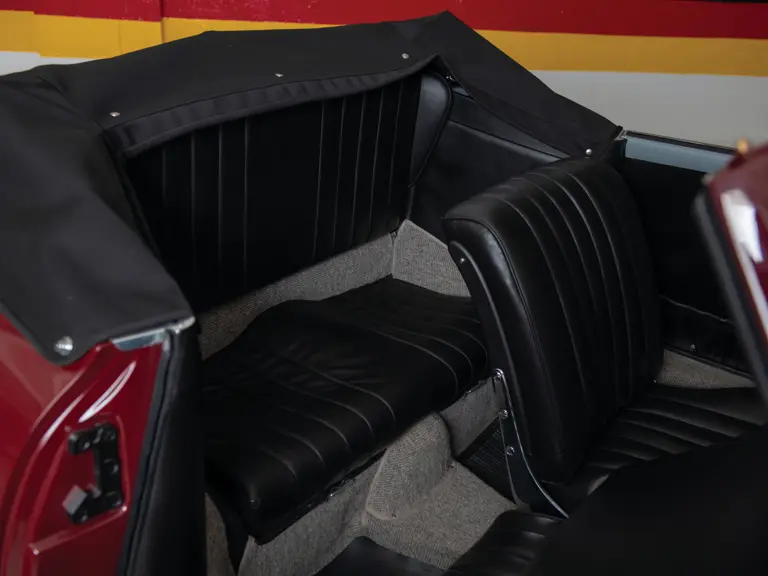
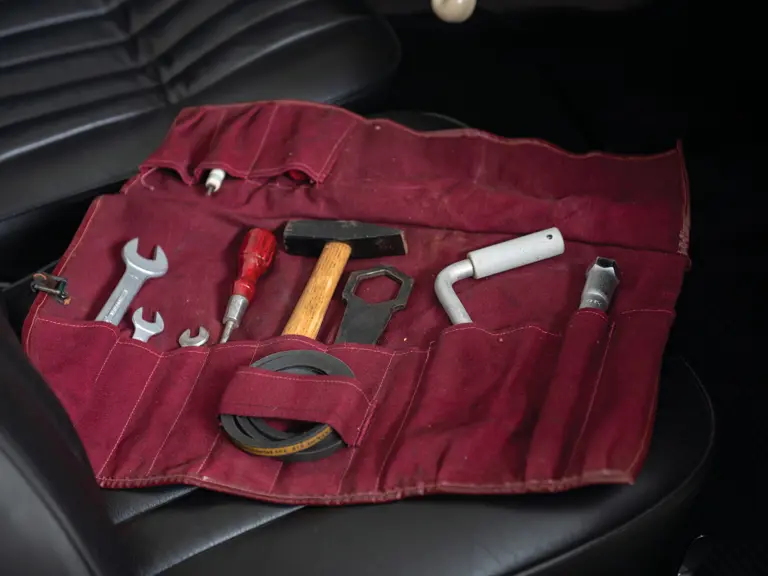
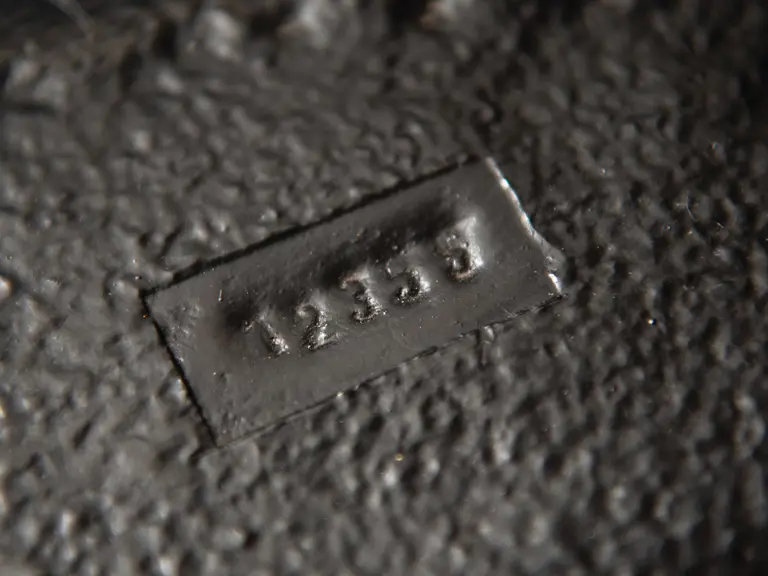
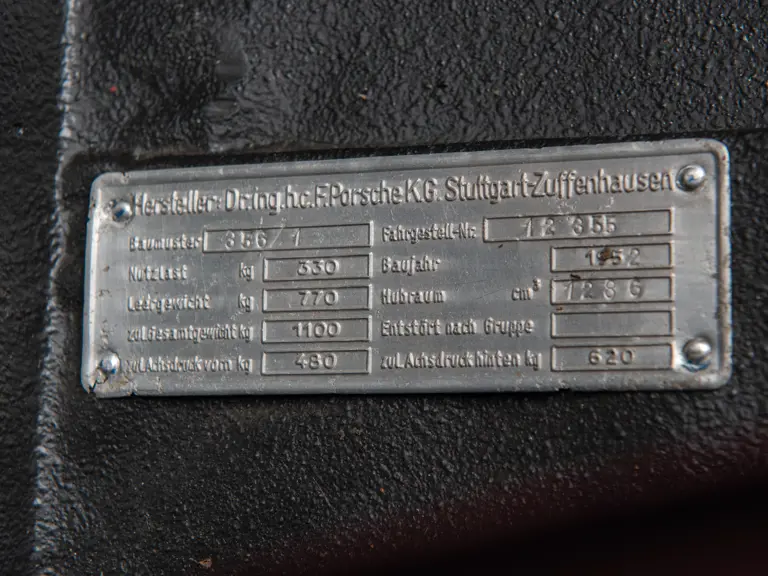
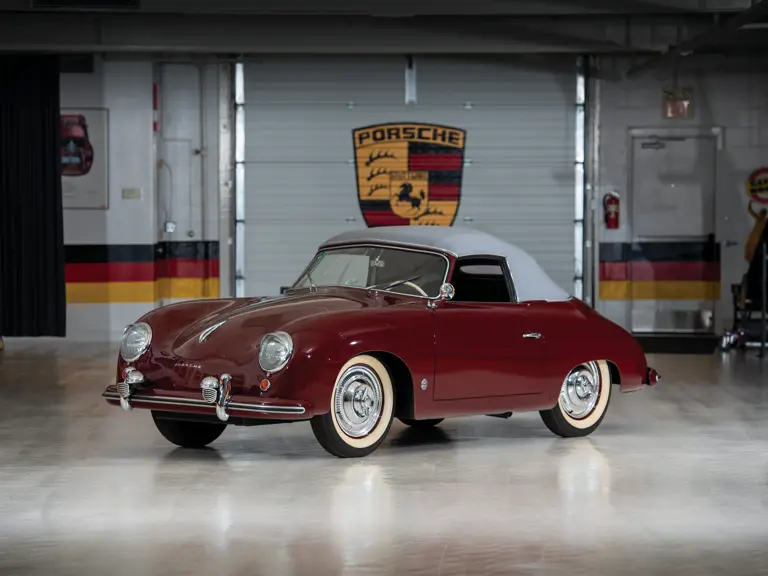
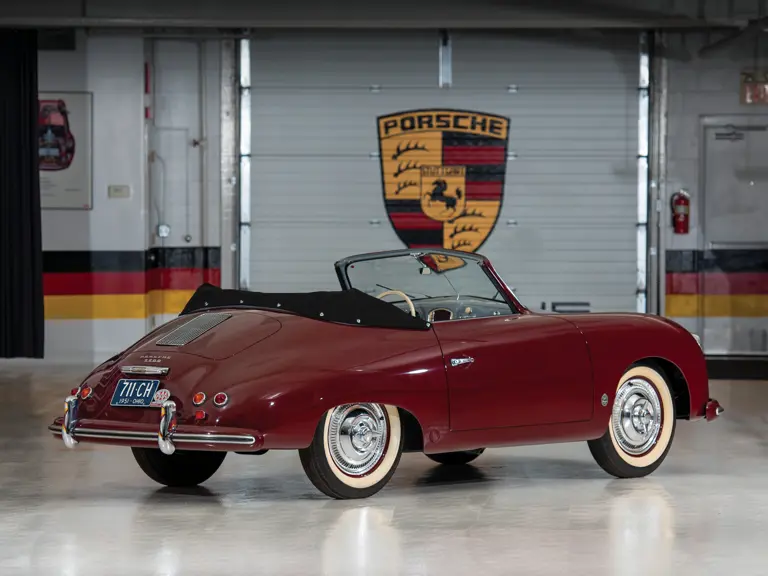
 | Dayton, Ohio
| Dayton, Ohio
